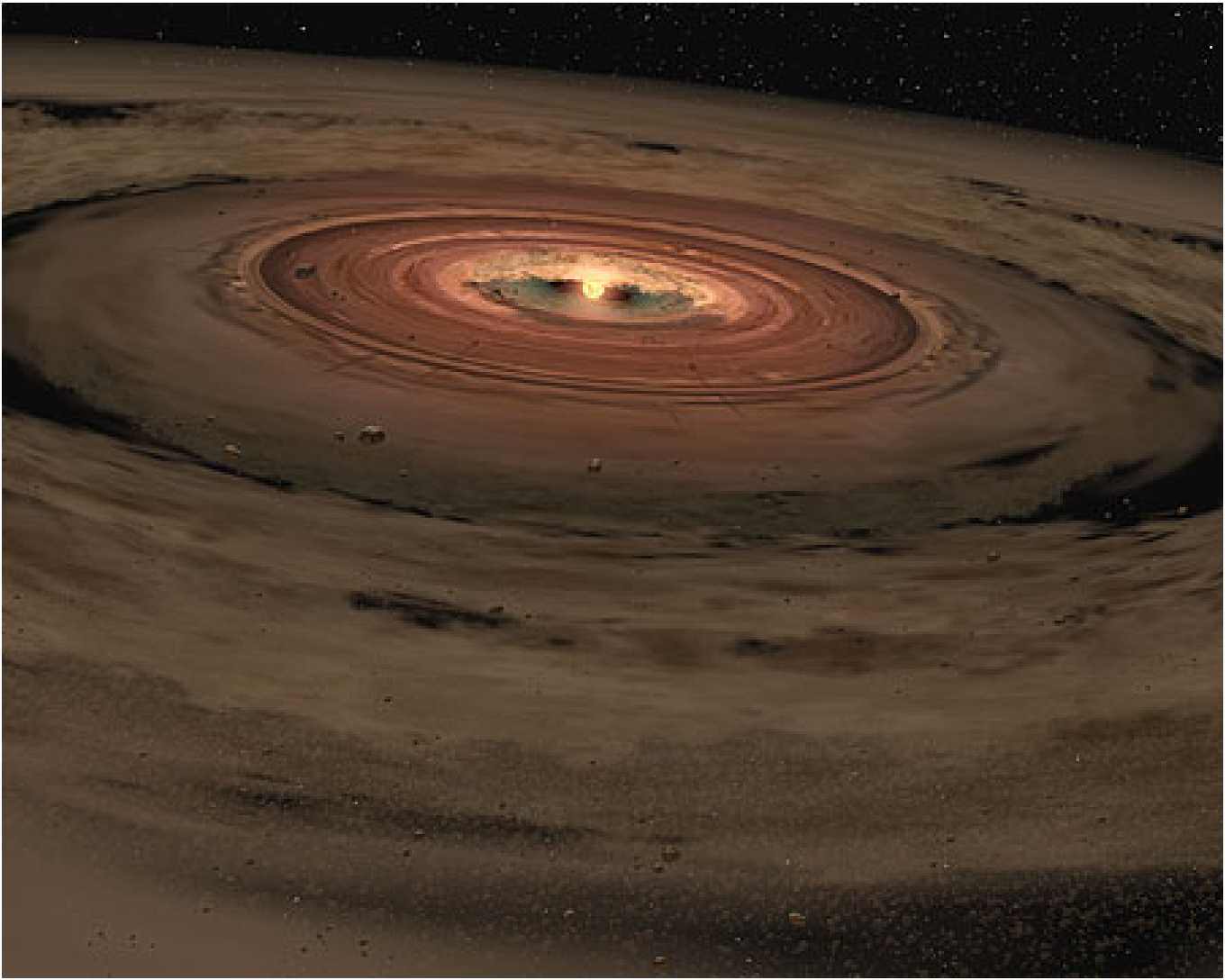Like the rest of the planets, Saturn formed from the solar nebula about 4.6 billion years ago. This solar nebula started out as a vast cloud of cold gas and dust which was disturbed somehow - perhaps by colliding with another cloud, or the shock wave from a supernova.
You can also check out these cool telescopes that will help you see the beauty of planet Saturn.
The cloud compressed down, forming a protostar in the center, surround by a flattened disk of material. The inner part of this disk contained more heavier elements, and formed the terrestrial planets, while the outer region was cold enough for ices to remain intact.
These ices came together, forming larger and larger planetesimals. And these planetesimals collided together, merging into planets. At some point in Saturn's early history, a moon roughly 300 km across might have been torn apart to create the rings that circle the planet today.
Since Saturn was smaller than Jupiter, it cooled down more quickly. Astronomers think that once its outer atmosphere reached about 15 K, helium condensed into droplets that fell towards its core. The friction from these droplets heated up the planet to the point that it gives off roughly 2.3 times the amount of energy it receives from the Sun.
Here's an article from Universe Today about how the gas giant planets might have
consumed their moons
early on, and another article about how
gas giant planets might form
around other stars.
Here's
an article
about the formation of Saturn's rings, and an article about what Saturn's moons might tell scientists about planet formation.
We have recorded two episodes of Astronomy Cast just about Saturn. The first is
Episode 59: Saturn
, and the second is
Episode 61: Saturn's Moons
.
 Universe Today
Universe Today
